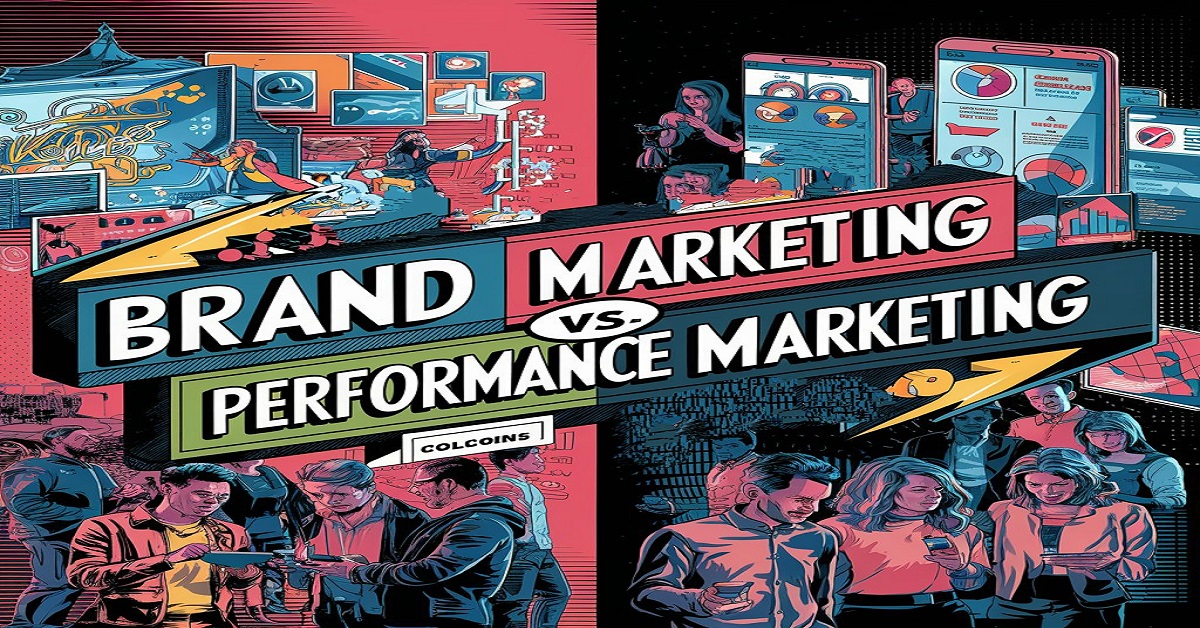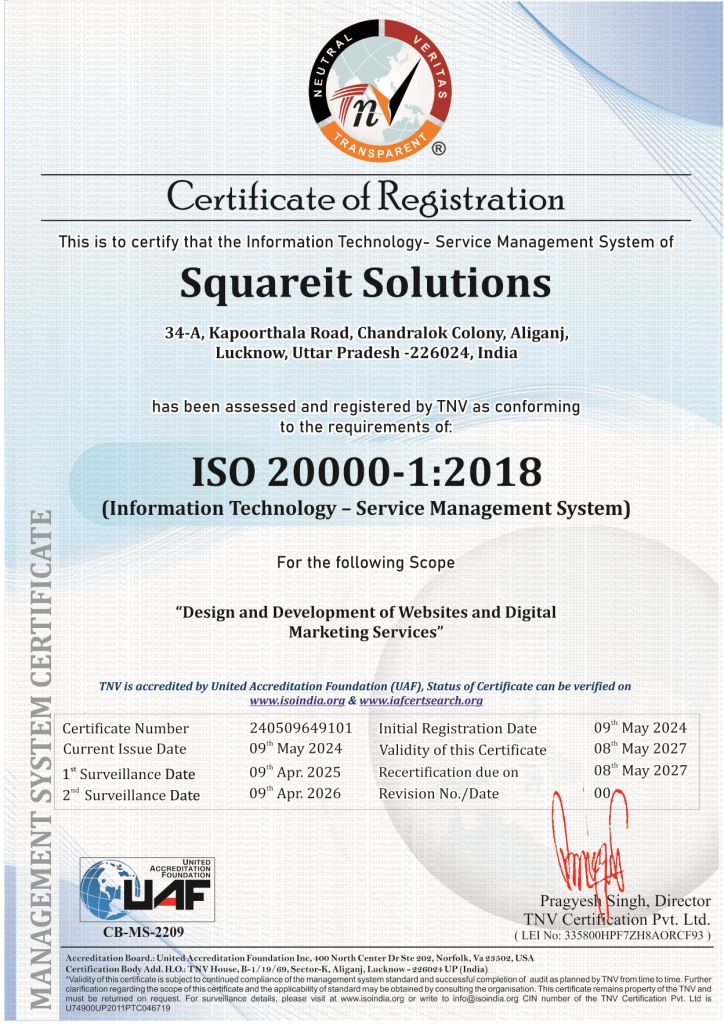In today’s competitive market, businesses constantly strive to identify the most effective marketing strategies to reach their target audiences and achieve their objectives.
Among the myriad of marketing approaches, two prominent strategies stand out: brand marketing and performance marketing.
While both have their unique advantages, understanding the nuances between the two can help businesses determine which strategy suits their needs best.
In this blog, we will delve into the core differences between brand marketing and performance marketing, explore their respective benefits, and provide guidance on how to choose the right strategy for your business.
Understanding Brand Marketing
Brand marketing focuses on building and maintaining a company's brand identity, reputation, and long-term relationship with its audience.
This strategy emphasizes creating a strong, positive perception of the brand in the minds of consumers, which can lead to increased loyalty and advocacy over time.
Brand marketing is less concerned with immediate sales and more focused on cultivating a lasting connection with the audience.
Key Elements of Brand Marketing
1. Consistency: Brand marketing relies on delivering a consistent message across all channels to reinforce the brand’s identity and values.
2. Emotional Connection: It aims to create an emotional bond with consumers by resonating with their values, aspirations, and lifestyles.
3. Long-term Focus: The primary goal is to build a sustainable brand presence that will endure over time.
4. Brand Awareness: Efforts are geared towards increasing brand recognition and recall among the target audience.
Benefits of Brand Marketing
? Customer Loyalty:A strong brand can foster customer loyalty, leading to repeat business and referrals.
? Premium Pricing: Established brands can often charge premium prices due to perceived value and trust.
? Market Differentiation: Effective brand marketing helps a business stand out from competitors by highlighting unique attributes and values.
? Resilience: A well-established brand can weather market fluctuations and crises more effectively.
Understanding Performance Marketing
Performance marketing, on the other hand, is a data-driven approach that focuses on achieving specific, measurable outcomes such as clicks, conversions, sales, and leads.
This strategy is highly tactical and emphasizes immediate results, making it easier to track ROI and optimize campaigns based on performance metrics.
Key Elements of Performance Marketing
1. Measurability: Every aspect of performance marketing is tracked and measured to evaluate success and ROI.
2. Optimization: Campaigns are continually optimized based on real-time data to improve performance and cost-efficiency.
3. Short-term Focus: The primary goal is to achieve immediate, tangible results.
4. Targeted Approach: Performance marketing targets specific segments of the audience with tailored messages to drive actions.
Benefits of Performance Marketing
? Measurable Results: Clear metrics and KPIs allow for precise measurement of campaign effectiveness.
? Cost Efficiency: Marketers can allocate budgets more effectively by focusing on high-performing channels and tactics.
? Scalability: Successful campaigns can be scaled quickly to maximize reach and impact.
? Agility: Performance marketing enables rapid adjustments based on real-time data, allowing for more responsive and adaptive strategies.
Brand Marketing vs Performance Marketing: Core Differences
While both brand marketing and performance marketing aim to drive business success, their approaches and outcomes differ significantly. Here are some key distinctions:
1. Time Horizon: Brand marketing is a long-term strategy focused on building enduring relationships, while performance marketing seeks immediate results and quick wins.
2. Objectives: The primary objective of brand marketing is to enhance brand perception and loyalty, whereas performance marketing focuses on driving specific actions such as sales and leads.
3. Measurement: Brand marketing success is often measured through qualitative metrics like brand sentiment and awareness, while performance marketing relies on quantitative metrics such as conversion rates and ROI.
4. Tactics: Brand marketing involves activities like storytelling, content marketing, and social media engagement. Performance marketing uses tactics like pay-per-click (PPC) advertising, affiliate marketing, and retargeting.
Choosing the Right Strategy for Your Business
Deciding between brand marketing and performance marketing depends on various factors, including your business goals, resources, and market conditions. Here are some considerations to help you make an informed decision:
Assess Your Business Goals
? Long-term Growth: If your primary goal is to build a strong brand that resonates with consumers and stands the test of time, brand marketing is the way to go.
? Immediate Sales: If you need to drive immediate sales, leads, or other specific actions, performance marketing will deliver the results you need.
Consider Your Budget
? Budget Constraints: Performance marketing can be more budget-friendly as it focuses on measurable outcomes and allows for precise budget allocation.
? Investment in Brand Equity: Brand marketing requires a more substantial investment in time and resources to build and maintain a strong brand presence.
Evaluate Your Market and Competition
? Highly Competitive Markets: In highly competitive markets, brand marketing can help differentiate your business and build a loyal customer base.
? Niche Markets: For niche markets, performance marketing can effectively target specific segments and drive conversions.
Analyze Your Resources
? Internal Capabilities: Assess your team’s capabilities and expertise. Performance marketing requires strong analytical skills, while brand marketing benefits from creative and strategic thinking.
? External Support: Consider whether you have access to external agencies or consultants who can support your chosen strategy.
Integrating Brand Marketing and Performance Marketing
While brand marketing and performance marketing are distinct approaches, they are not mutually exclusive. In fact, integrating both strategies can create a more robust and effective marketing plan. Here’s how you can combine the strengths of both:
? Unified Messaging: Ensure that your brand’s core message and values are reflected in both brand and performance marketing efforts. Consistency is key to building a cohesive brand identity.
? Cross-Channel Strategies: Use performance marketing to drive traffic and conversions while leveraging brand marketing to nurture and retain customers. For example, a PPC campaign can attract new customers, and email marketing can engage them with your brand story.
? Data-Driven Insights: Utilize the data from performance marketing campaigns to inform and refine your brand marketing strategies. Insights into customer behavior and preferences can enhance your brand messaging.
? Balanced Budget Allocation: Allocate your budget strategically between brand and performance marketing. Ensure that you invest enough in building brand equity while also driving immediate results.
Case Studies: Brand Marketing vs Performance Marketing
Case Study 1: Coca-Cola (Brand Marketing)
Coca-Cola is a prime example of successful brand marketing. The company has invested heavily in building a global brand that is synonymous with happiness and refreshment. Through consistent messaging, iconic advertising campaigns, and emotional storytelling, Coca-Cola has created a powerful brand identity that resonates with consumers worldwide. This long-term focus on brand building has enabled Coca-Cola to maintain its market leadership and command premium pricing.
Case Study 2: Amazon (Performance Marketing)
Amazon excels in performance marketing with its data-driven approach to customer acquisition and retention. The company leverages sophisticated algorithms and analytics to optimize its marketing campaigns and drive conversions. From targeted email marketing to personalized product recommendations, Amazon’s performance marketing strategy is designed to deliver immediate results and enhance customer experience. This focus on measurable outcomes has contributed to Amazon’s rapid growth and dominance in the e-commerce space.
Conclusion: Finding the Right Balance
In conclusion, the choice between brand marketing and performance marketing depends on your business objectives, resources, and market dynamics.
Brand marketing is ideal for building a lasting connection with consumers and establishing a strong market presence, while performance marketing is effective for driving immediate actions and achieving measurable results.
However, integrating both strategies can provide a balanced approach that leverages the strengths of each, creating a comprehensive marketing plan that drives both short-term success and long-term growth.
When deciding which strategy suits your business, consider your goals, budget, market conditions, and internal capabilities. By understanding the unique benefits of brand marketing and performance marketing, and finding the right balance between the two, you can develop a marketing strategy that aligns with your business needs and drives sustainable success.
Brand marketing and Performance marketing (FAQs)
1. What is the main difference between brand marketing and performance marketing?
Brand marketing builds long-term brand identity and emotional connections, focusing on brand awareness and loyalty. Performance marketing aims for immediate, measurable outcomes like clicks and sales.
2. How do I decide which strategy suits my business better?
Choose brand marketing for long-term brand equity and customer loyalty. Opt for performance marketing to drive immediate sales and measurable results. A combination of both can be effective.
3. Can brand marketing and performance marketing be integrated?
Yes, combining both strategies can strengthen your marketing plan. Use performance marketing to drive traffic and conversions, and brand marketing to build and maintain customer relationships.
4. What are some key benefits of brand marketing?
Brand marketing increases customer loyalty, allows for premium pricing, differentiates your business, and provides resilience in market fluctuations.
5. What are the advantages of performance marketing?
Performance marketing offers measurable results, cost efficiency, scalability, and agility. It allows precise budget allocation and real-time campaign optimization.



.png)


